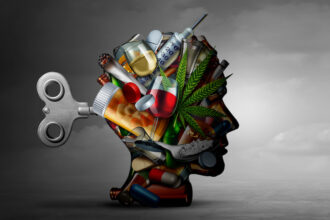For anyone battling substance addiction, the first hurdle often feels like the hardest—taking that bold, first step toward healing. That step, for many, begins with medical detox, a clinically supervised process that helps the body eliminate harmful substances while minimizing the intense discomfort of withdrawal. Far from being a simple cleanse, medical detox lays the physical and psychological groundwork for long-term recovery.
Let’s explore how this vital process works, why it’s safer than alternative methods, and what to expect during this life-changing phase.
What Is Medical Detox and Why Is It Necessary?
Medical detox is the controlled and supervised removal of drugs, alcohol, or other harmful substances from a person’s system. Unlike natural detoxes or at-home methods, medical detox takes place in a professional healthcare setting—often in hospitals, residential facilities, or dedicated detox centers.
Substance abuse physically alters the body’s systems. When a person suddenly stops using, the body reacts with withdrawal symptoms. These symptoms can range from mild discomfort to severe and even life-threatening conditions. Medical detox is essential because it:
- Provides 24/7 supervision by trained professionals
- Uses medications to ease withdrawal symptoms
- Offers emotional and psychological support
- Creates a safe environment for stabilization
Without medical intervention, withdrawal can result in seizures, hallucinations, dehydration, suicidal thoughts, or relapse due to overwhelming discomfort.
Who Needs Medical Detox?
It’s a common misconception that only people with severe addiction issues need detox. In reality, even individuals with moderate or recent substance use may require medical detox, depending on the substance involved and their overall health.
Here are some indicators that detox in a clinical setting is recommended:
- History of long-term or heavy substance use
- Previous withdrawal complications
- Use of multiple substances (polysubstance abuse)
- Presence of physical or mental health conditions
- Lack of a supportive or stable home environment
Drugs most often requiring professional detox include alcohol, opioids, benzodiazepines, and certain prescription medications. Even stimulants like cocaine or meth may call for medical detox if psychological symptoms are extreme.
Medical Detox vs. Going “Cold Turkey”: A Dangerous Myth
Some individuals attempt to quit using substances on their own, abruptly stopping all consumption without assistance—a method known as “going cold turkey.” While this approach might seem courageous, it can be dangerous and even fatal.
Here’s why:
1. No Symptom Management
Unmedicated withdrawal can lead to unbearable pain, nausea, hallucinations, or suicidal ideation. Many relapse simply to stop the suffering.
2. Risk of Complications
Withdrawal from alcohol or benzodiazepines can trigger seizures, heart problems, or delirium tremens (DTs)—a medical emergency.
3. No Medical or Mental Health Support
Without professional guidance, there’s no one to address the mental health symptoms that accompany detox—such as depression, anxiety, or psychosis.
4. No Plan for Long-Term Recovery
Even if detox is successful at home, there’s usually no structure or follow-up care, increasing the risk of relapse.
Choosing medical detox isn’t a sign of weakness—it’s a commitment to doing it the right, safe, and smart way.
Inside a Medical Detox Program: Step-by-Step Guide
Understanding what actually happens during Medical detox can reduce fear and uncertainty. Here’s a breakdown of what patients typically experience:
1. Intake & Assessment
Upon arrival, medical professionals assess the patient’s health history, substance use patterns, vital signs, and mental status. This information helps develop a personalized detox plan.
2. Stabilization
This is the core phase of detox. Using medication, nutrition, hydration, and monitoring, the medical team works to ease withdrawal symptoms and keep the patient safe and stable.
3. Emotional & Psychological Support
Detox isn’t just physical—many patients experience anxiety, guilt, or depression. Counselors, therapists, and peer support groups offer emotional stability during this stage.
4. Discharge Planning
Detox alone isn’t enough. Before discharge, the team helps the patient transition into the next phase—often a rehab program or outpatient therapy plan.
A typical detox may last anywhere from 3 to 10 days, depending on the substance involved and the person’s response.
Medications Commonly Used During Detox
Medical detox often includes the use of medications to manage withdrawal symptoms, prevent complications, and reduce cravings. Here are some commonly prescribed treatments:
- Benzodiazepines – For managing alcohol withdrawal and preventing seizures
- Buprenorphine/Suboxone – For opioid withdrawal, easing symptoms and reducing cravings
- Methadone – Used in opioid detox, particularly in tapering programs
- Naltrexone – Blocks the euphoric effects of drugs or alcohol and helps maintain abstinence
- Antidepressants or sleep aids – For managing mood swings, insomnia, or anxiety during detox
All medications are administered and monitored by licensed professionals to ensure safety and effectiveness.
The Emotional Side of Detox: A Turning Point
What many people don’t anticipate during detox is the emotional release that comes with letting go of substances. Years of trauma, shame, loneliness, and self-doubt often rise to the surface once the numbing effect of drugs or alcohol is removed.
This is where emotional support becomes just as important as medical treatment.
Most detox centers offer:
- One-on-one counseling sessions
- Support groups or 12-step meetings
- Mindfulness and stress-reduction practices
- Art, music, or recreational therapy
These resources help patients reconnect with their emotions in a healthy, constructive way—preparing them for deeper therapeutic work ahead.
What Happens After Detox? The Real Work Begins
Detox is only the first step in a much longer recovery process. Once the body is free from substances and the mind begins to clear, it’s time to address the root causes of addiction.
Post-detox treatment options include:
- Inpatient Rehab – Full-time treatment in a residential setting
- Outpatient Therapy – Regular therapy sessions while living at home
- Dual Diagnosis Programs – For individuals with co-occurring mental health disorders
- Sober Living Homes – Safe housing that supports recovery
- Continued Medication-Assisted Treatment (MAT) – Long-term use of medications like Suboxone or Naltrexone
- Aftercare Programs – Ongoing counseling, relapse prevention, and peer support
Staying clean after detox is a daily commitment, but with the right support network, it’s completely achievable.
Conclusion: Medical Detox Is More Than a Process—It’s a Lifeline
Addiction affects millions of people, but recovery is within reach. Medical detox offers a controlled, supportive environment that removes the immediate danger of withdrawal and clears the path for deeper healing.
It’s not just about getting drugs or alcohol out of your system—it’s about giving your body and mind the chance to reset, realign, and begin again.
If you or someone you care about is struggling with substance use, consider medical detox not as a last resort, but as the powerful first step it truly is. Healing doesn’t happen overnight—but it starts the moment you decide that your life is worth fighting for.
















